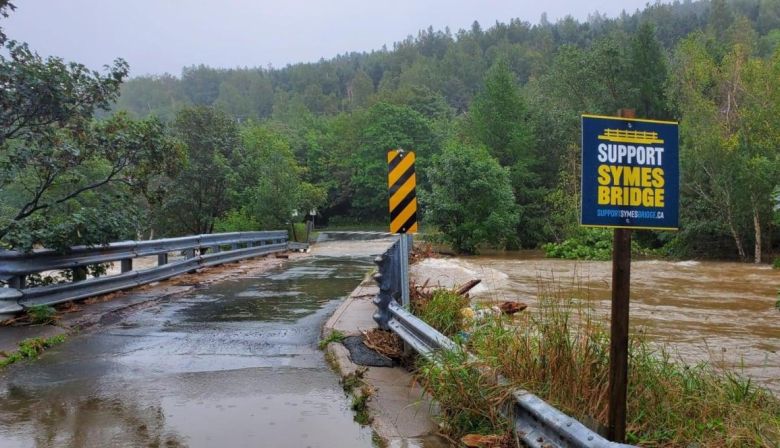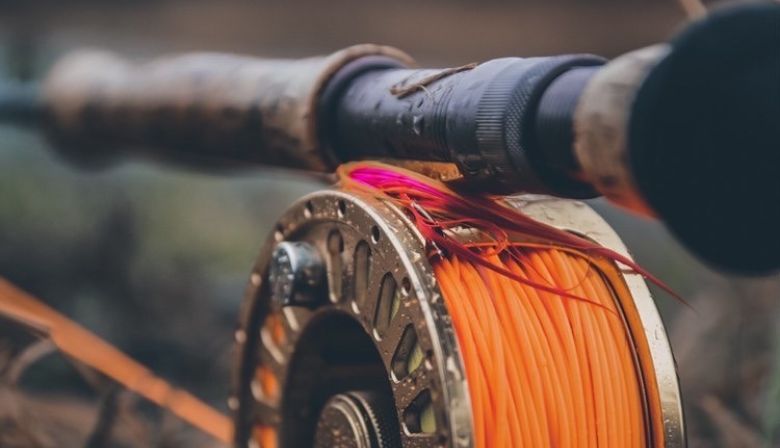
Subscribe & stay up-to-date with ASF

COMPILED BY DEIRDRE GREEN (DGREEN@ASF.CA)
Sep 22, 2022

From heat waves to hurricanes — Atlantic Canada and eastern Quebec brace for Hurricane Fiona — predicted to merge with a trough and transform into a hurricane force post tropical cyclone on Saturday. We need rain, however, this storm is forecasted to bring intense rainfall (100-200mm) and severe winds.
While visiting affiliates and assisting with field work throughout Nova Scotia these past two weeks, it was great to see lively fish moving throughout our rivers. On the Margaree in Cape Breton, anglers commented that they were surprised to see large males despite the low water levels. The harvest moon (Sept. 9) combined with cold morning temperatures has brought success.
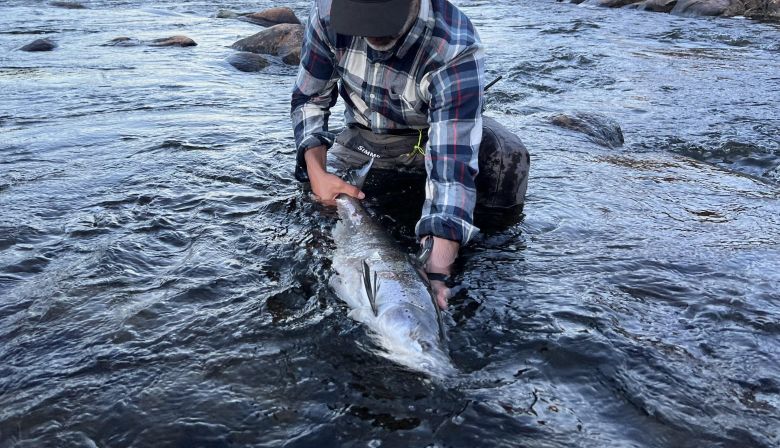
Groundbreaking Event in Lisbon
John Burrows, Cat Birmingham and Peter Dore from the Atlantic Salmon Federation recently attended a riverside ceremony in Maine. Cat shares:
On September 15th, 2022, ASF joined with representatives from the Department of the Interior, U.S. Fish and Wildlife Service (USFWS), Maine Department of Marine Resources (DMR), and the Town of Lisbon to celebrate the removal of the Upper Town Dam on the Sabattus River in Lisbon, Maine. See Press Release issued by USFWS.
ASF has been working with Maine DMR and USFWS to provide fish passage at six dam sites on the Sabattus for the last decade. Upper Town Dam is the second barrier to be removed from the river in recent years and a third barrier, known as the Mill Remnants Dam, will be removed in 2023.
The project was selected as a funding priority for the Bipartisan Infrastructure Law (BIL) through the U.S. Fish and Wildlife Service’s National Fish Passage Program. Program projects funded by BIL will help restore rivers, protect wildlife, support communities, and improve climate resilience. As one of the first projects funded by the Bipartisan Infrastructure Law to break ground, the removal of the Upper Town Dam is a national milestone. Funding for the project was also provided by the National Fish and Wildlife Foundation through the National Coastal Resilience Fund.
Collectively, these projects will restore access to more than 40 miles of designated critical habitat for endangered Atlantic salmon and will be a tremendous boost for populations of river herring, especially alewives, in the Sabattus and the lower Androscoggin River. Maine DMR has been trucking alewives from the Brunswick Dam on the Androscoggin River to Sabattus Pond, the headwaters of the Sabattus River, since 1982 and with the removal of these dams, these fish will be able to swim into the pond for the first time in two centuries.
At the groundbreaking event on September 15th, Winnie Stachelberg, Senior Advisor and Infrastructure Coordinator at the Department of Interior, provided special thanks and appreciation to ASF commenting that for decades, ASF has been “a leader in advancing science to restore fish passage for salmon and other sea-run fish species that are part of our natural and cultural heritage in the North Atlantic region.”
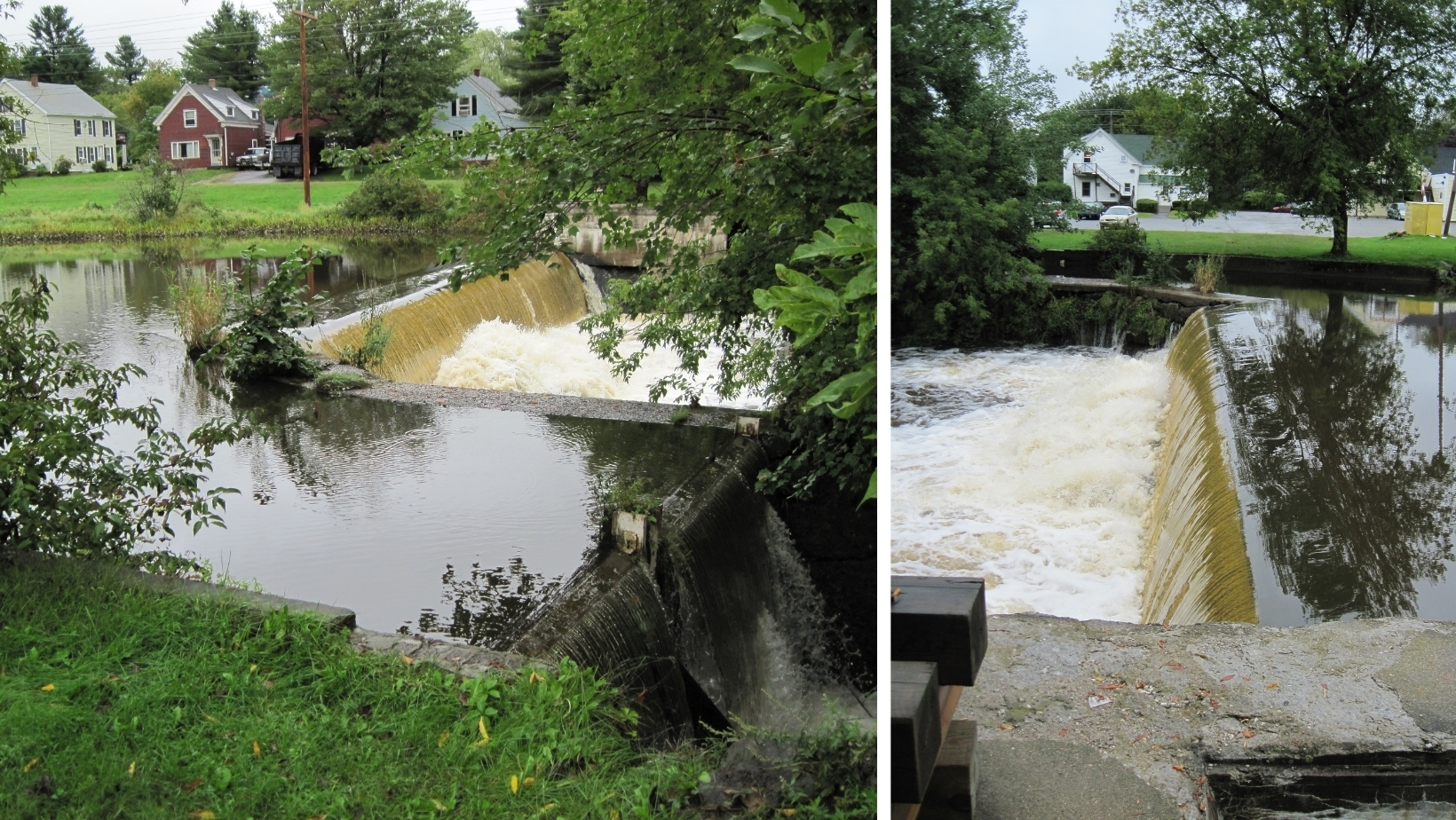
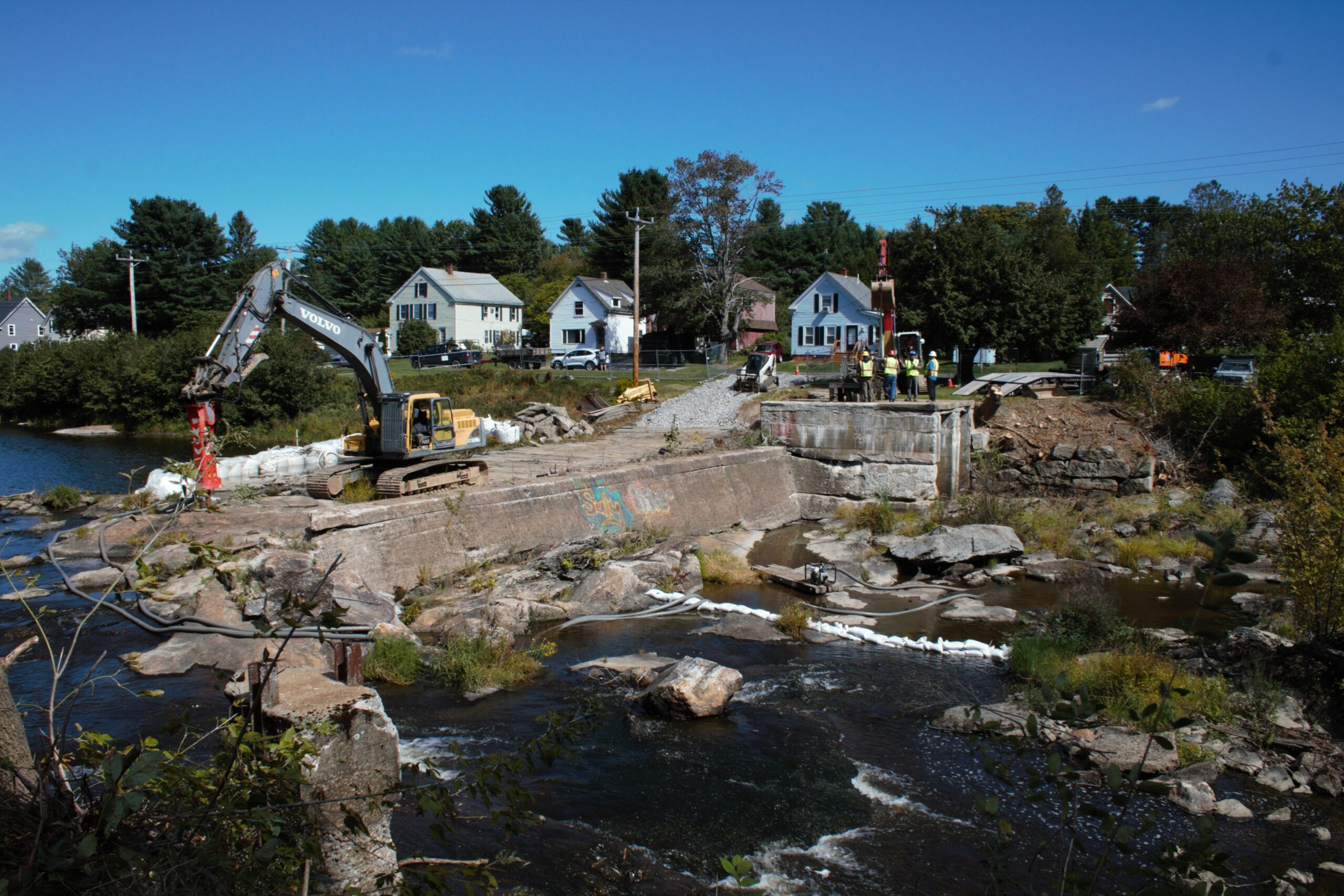
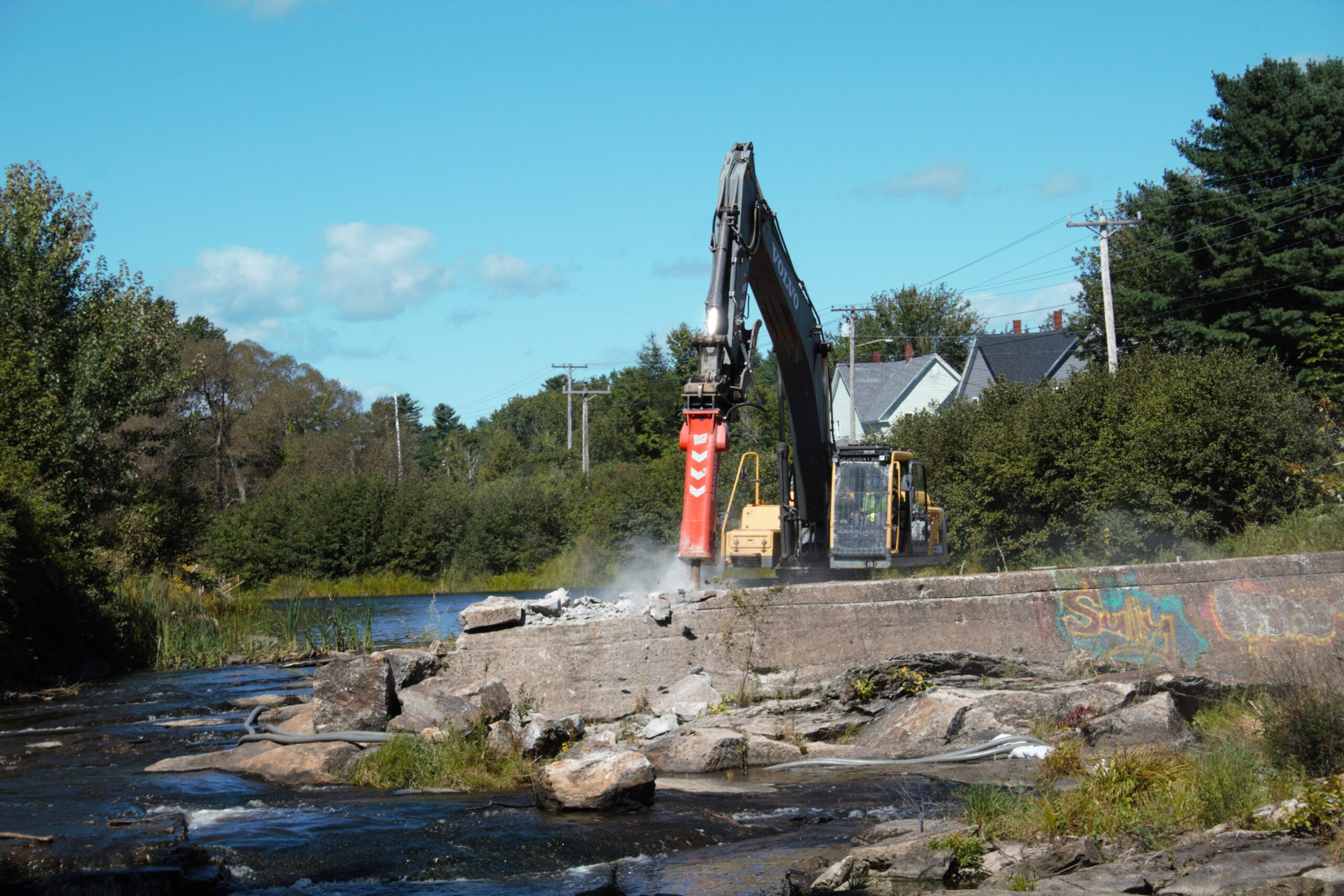
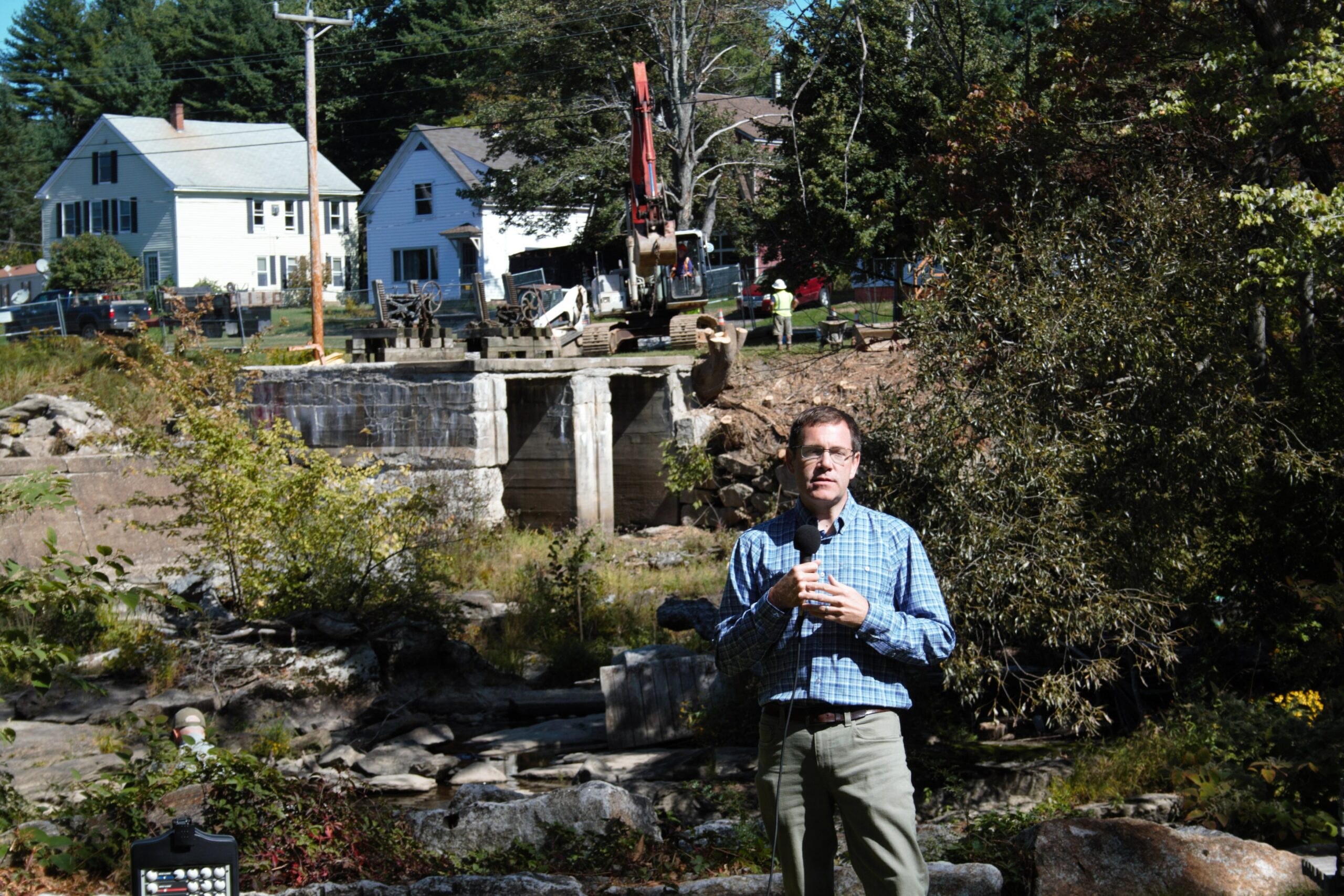
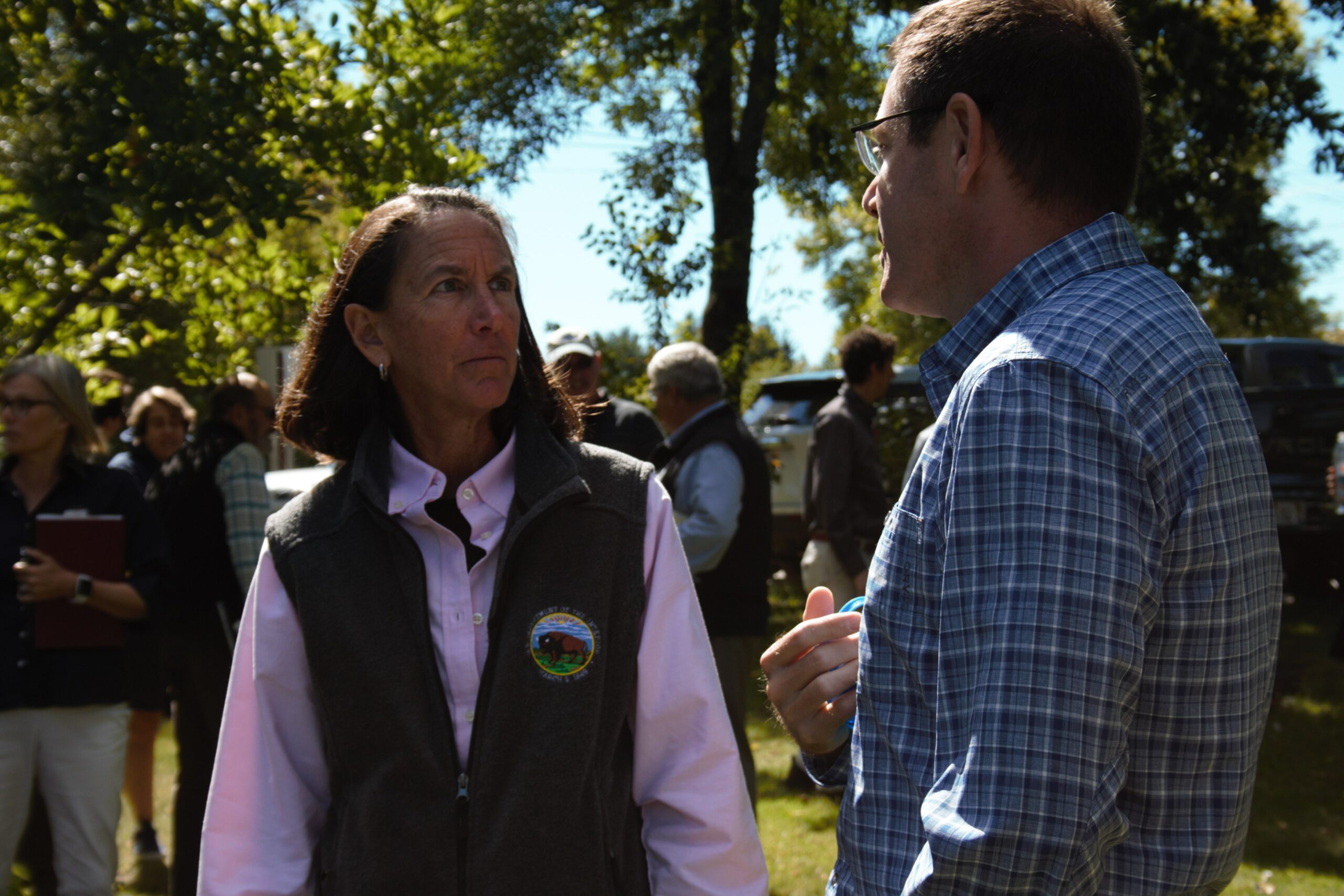
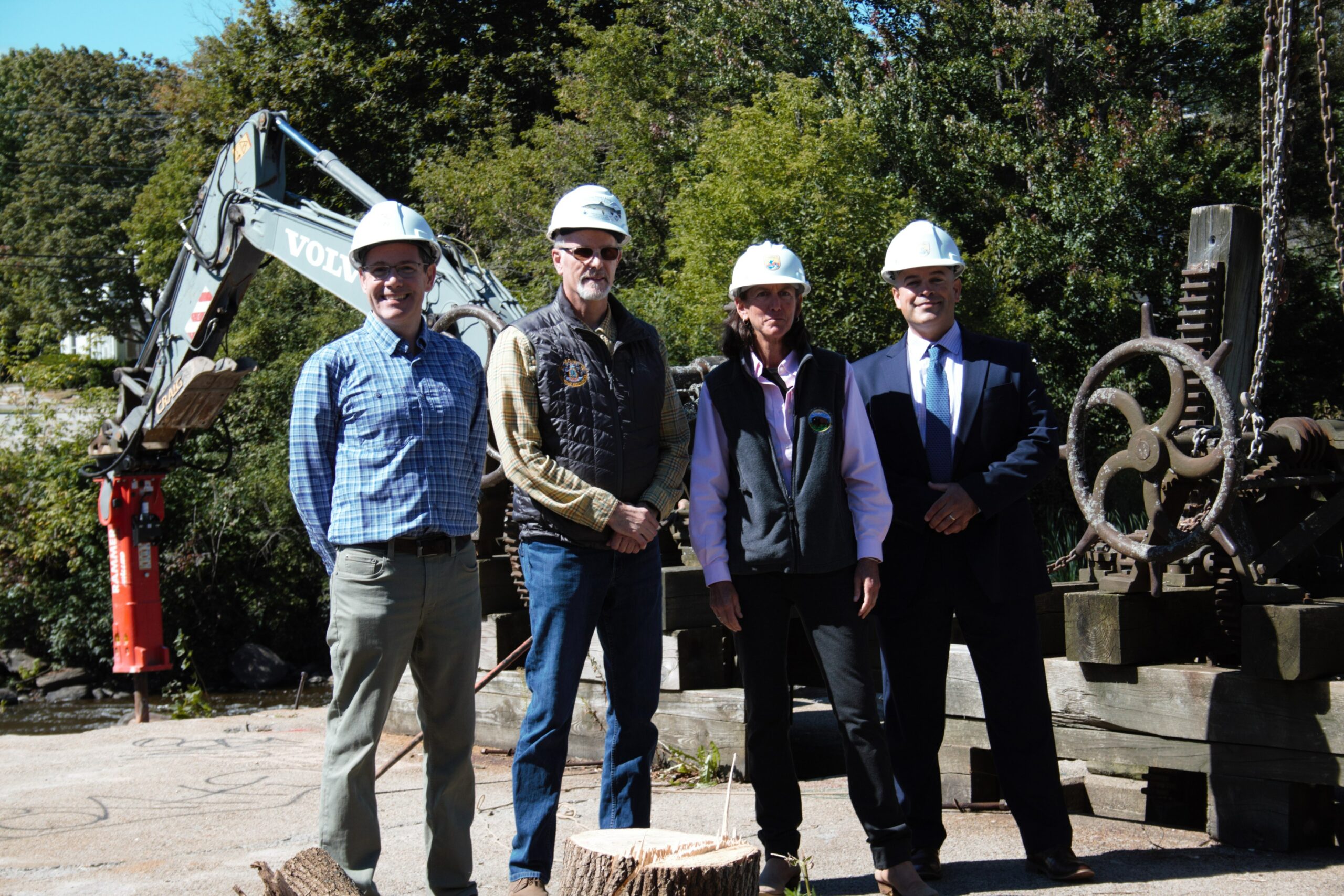
Kennebec and Androscoggin Rivers
Updates provided by DMR’s Jennifer Noll over the past two weeks:
Flows on the lower mainstem Kennebec have been hovering around 3,000 – 5,500cfs. The discharge level is now between the minimum and 25th% historic discharge levels (based on 36 years of data). (USGS current conditions).
The fish lift has been fully operating over most of the past week. No Atlantic salmon were captured since the last report.
Electrofishing juvenile assessments have begun in the Sandy River as of 8/10. To date 31 sites have been completed in the Sandy River drainage and 27 sites contained salmon. All sites are in the mid/upper mainstem Sandy and its tributaries: South Branch Sandy River (and tributaries), Valley Brook, Perham Stream, Orbeton Stream, Temple Stream, Barker Stream, Mt. Blue Stream and Avon Valley Stream. Two pictures of an upper Mt. Blue site that was sampled last week are found below. Notice that this site has a well buffered riparian zone. Mt. Blue typically produces high densities of parr and optimal growth of juveniles for the Sandy River drainage.
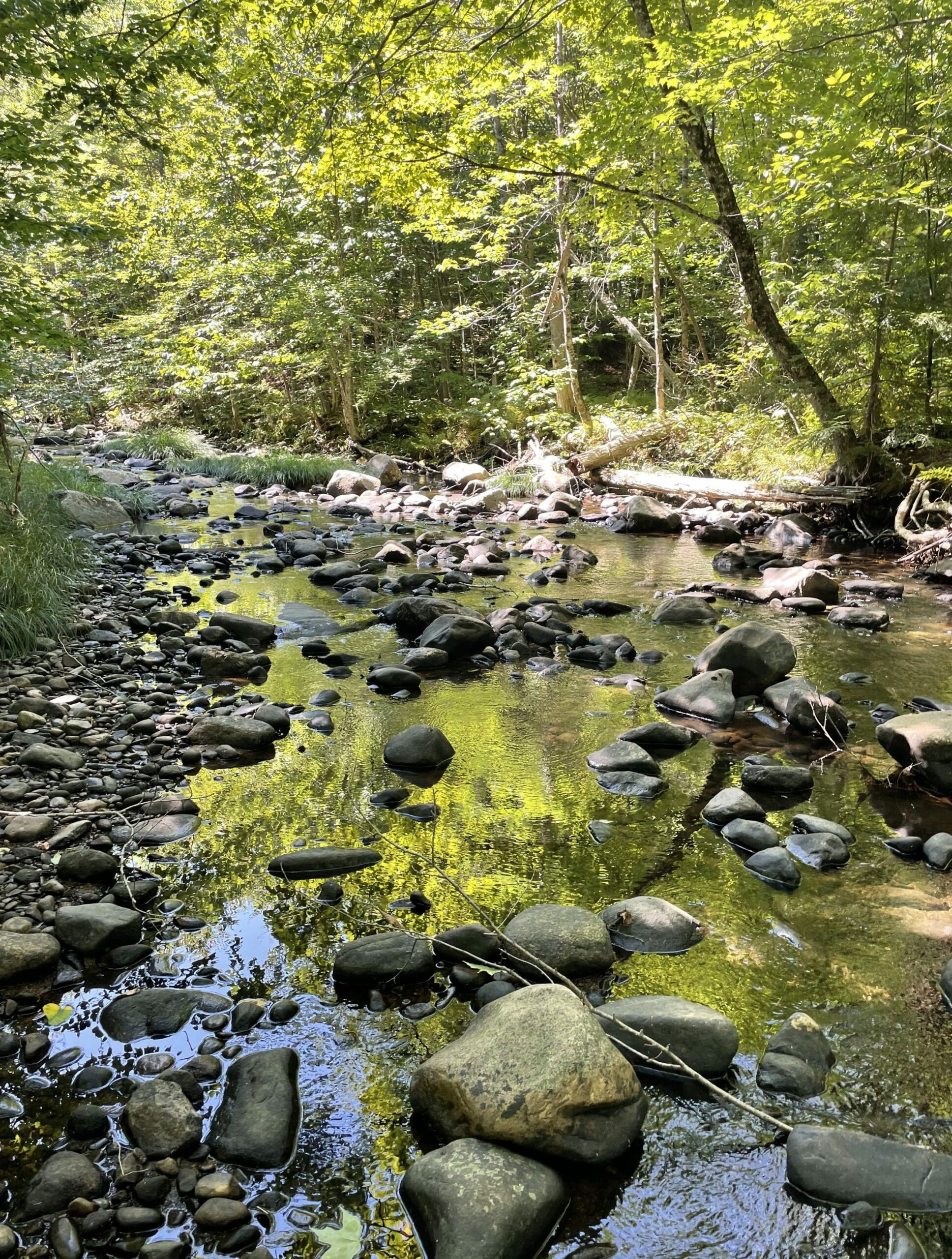
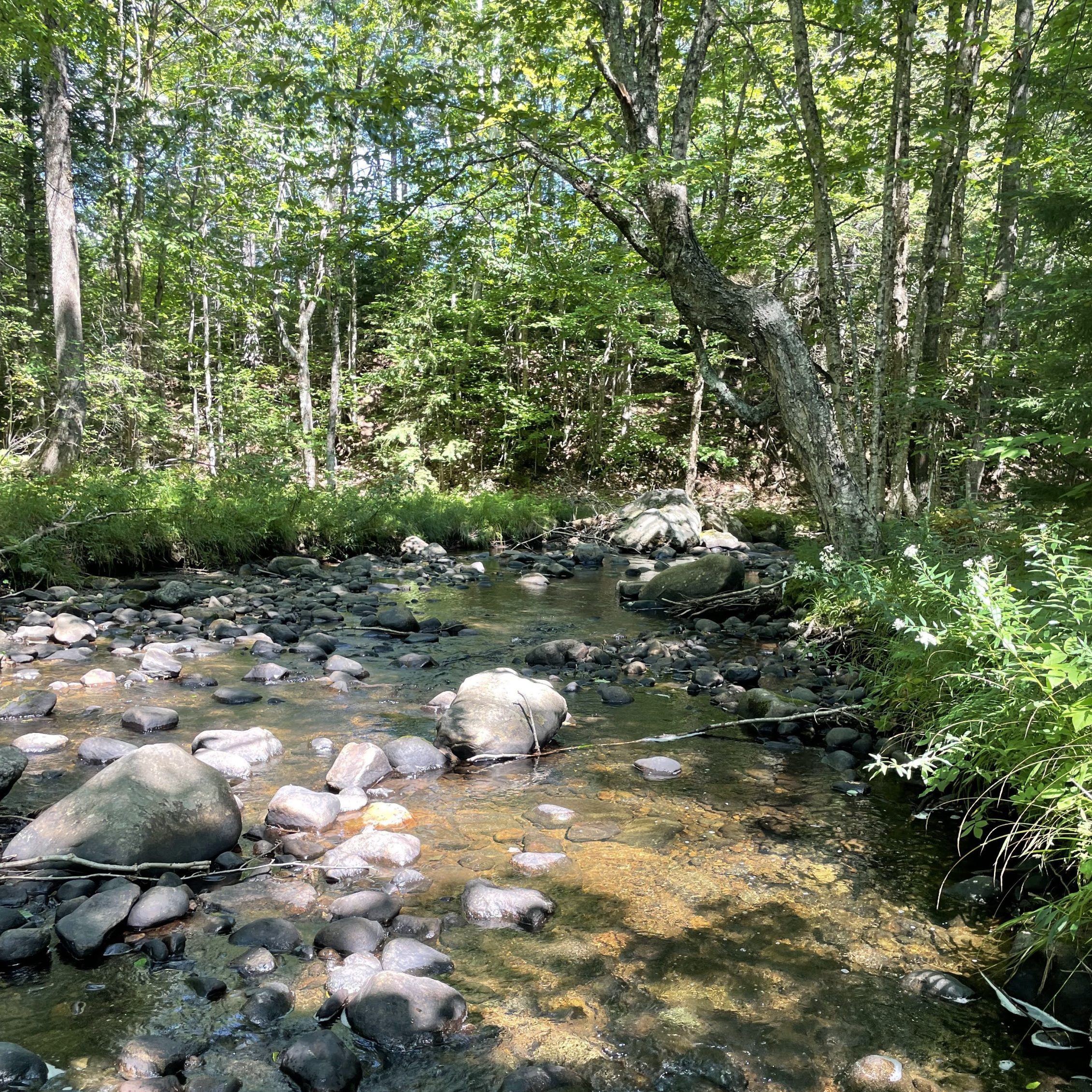
This week was the first week of juvenile assessments via electrofishing in the Sheepscot River. Twelve index sites will be sampled throughout the drainage. Due to the Labor Day rain storm that came through on Monday, electrofishing was postponed until Thursday this week to allow the flow to return to normal. Atlantic salmon have been detected in three of the three sites completed so far this season. Attached are two pictures from assessments in the Sheepscot – one of our first site named “Rootwad” which had 1 wild young of year and 20 parr in it. The other is a picture of the non-native yellow bullhead that was caught in 2 mainstem sites. As of September 16th, a total for 215 parr have been collected from sites across the Sheepscot River and transferred to Craig Brook.
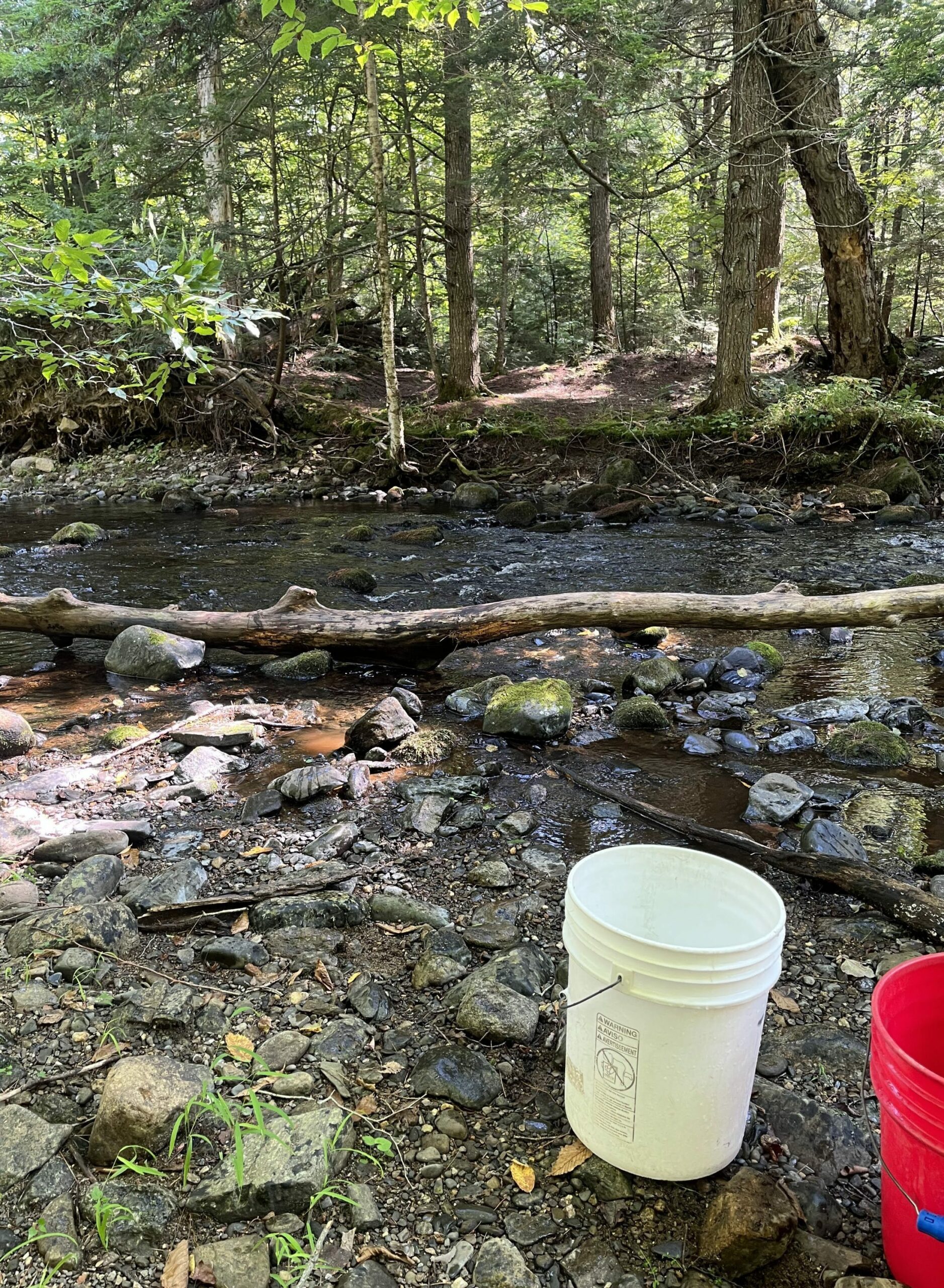
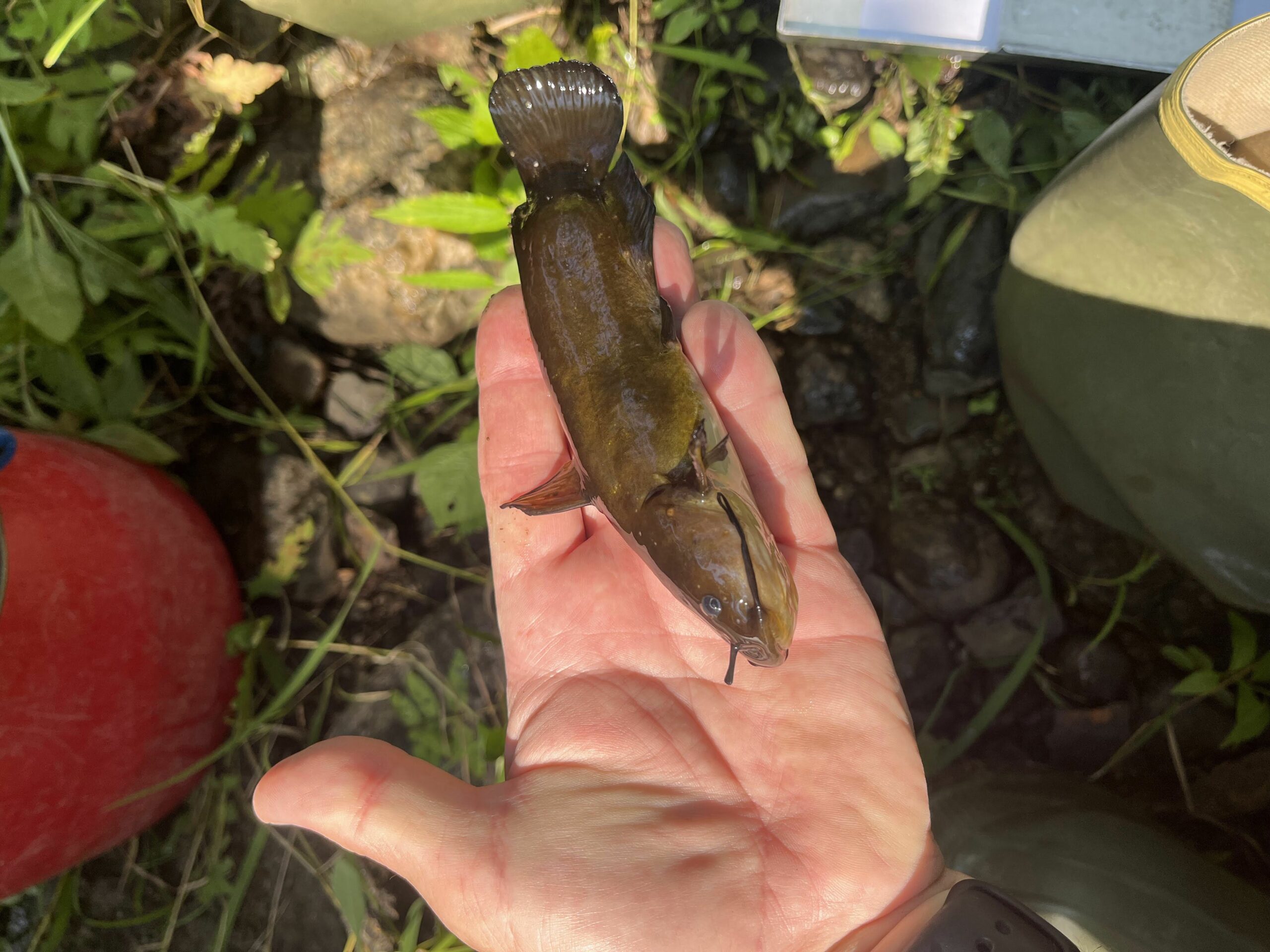
Penobscot River
On September 16th Maine DMR’s, Jason Valliere provided the following comments and report:
River temp was down to 19.7c this afternoon. Fall has definitely been in the air the past couple nights. 39f degrees at my house this morning. Leaves are starting to fall.
7 new salmon last week. That brings our total to 1264.
See reports dated 8-Sept-2022 and 16-Sept-2022.
Échos des rivières au 22 septembre 2022
Charles Cusson, Directeur québécois
Les débits se sont amélioré considérablement grâce à des pluies abondantes la semaine dernière qui a causé une amélioration des conditions de pêche en Gaspésie et dans le Bas-Saint-Laurent.
Alors, saumoniers et saumonières, à vos perches, car l’hiver peut-être est long entre vos sessions de montage de mouche.
Il reste encore 8 jours de pêche, Tight Lines!
– Les données utilisées dans ce rapport proviennent de divers sites web, des médias sociaux et de source gouvernementale québécois. Les informations peuvent changer sans avis au préalable en ce qui concerne les comparatifs des saisons précédentes.
Rivière Mitis
Cette saison l’abondance de saumon enregistre une augmentation de 328 saumons et une diminution de 542 petits vis-à-vis la saison 2021.
1 539 poissons ont franchi le piège de comptage jusqu’au 19 septembre dont 1 079 saumons et 460 petits.
Cumulativement au 20 septembre 2021, 1 754 (751 saumons et 1 002 madeleineaux) avaient été comptés par le biais du piège de comptage.
Rivière Matane
En date du 20 septembre, depuis le 5 septembre, aucun saumon ou madeleineau n’ont franchi la passe migratoire, événement qui nous laisse perplexes considérant l’augmentation du débit depuis la semaine dernière.
2 239 poissons (1 207 saumons et 1 032 petits) ont cumulativement été comptés par le biais de la passe migratoire au 20 septembre.
En date du 20 septembre 2021, 2 296 poissons, dont 946 saumons et 1 350 petits avaient franchi la passe migratoire.
Rivière Matapédia
Cumulativement au 20 septembre, 779 captures furent rapportées à la CGRMP comprenant 499 saumons graciés et 280 madeleineaux récoltés.
La saison dernière, les saumoniers et saumonières ont déclaré la capture de 755 poissons, dont 385 relâchés et 370 récoltés au 20 septembre 2021.
Rivière Bonaventure
En date du 17 septembre, l’APSB fait rapport que 1 423 poissons (1 078 saumons graciés et 345 madeleineaux récoltés) ont été enregistrés.
Au 18 septembre 2021 jusqu’à ce jour, 1 210 poissons avaient été déclarés capturés par les pêcheurs sportifs dont 760 saumons remis à l’eau et 450 petits récoltés.
Charles Cusson, Director of Quebec Programs shares:
Some Gaspé rivers have benefited from an influx of water last week which has greatly improved angling conditions and resulted in a renewed aggressiveness of our salmon to take the fly.
Just 8 days remain — Tight Lines!
Note: The data used for the Quebec River notes are sourced from various river websites, social media, and Quebec government sources. Information can change without prior notification regarding prior year comparative figures.
Mitis River
The abundance of salmon this season is noteworthy compared to the 2021 season. 328 more salmon have been counted. The number of grilse to date has diminished by 542.
To September 19th, 2022 — 1,539 fish have been counted (1,079 salmon and 460 grilse).
As of September 20th, 2021, for the season — 1,754 fish (751 salmon and 1,002 grilse) had been counted.
Matane River
As of the writing of this report on September 20th, no fish have entered the fishway since September 5th.
For the 2022 season, as of September 20th, a total of 2,239 fish have migrated through the fishway (1,653 salmon and 1,013 grilse).
In 2021 at the same date, 2,296 fish had been counted (946 salmon and 1,350 grilse).
Matapedia River
To September 20th, for this season, 779 fish have been reported to the CGRMP as landed. This includes 499 salmon released and 280 grilse harvested.
Last season, at the same date, 755 fish were declared landed which included 385 released and 370 harvested (salmon and grilse).
Bonaventure River
To September 17th, for this season, 1,423 fish have been reported landed (1,078 salmon released and 345 grilse harvested).
1,210 fish had been reported by anglers to September 18th, 2021, which included 760 salmon released and 450 grilse harvested.
Father & Son Trip
Ben Carmichael and his father — veteran angler, author and builder of bamboo rods, Hoagy Carmichael, recently returned from a trip to the the New Derreen camp and were fortunate to connect with a few fish (pictured below).
You can follow Ben on Instagram @newenglandonthefly and at newenglandonthefly.com.
Hoagy was interviewed a few years ago by April Vokey. You can listen to their discussion via April’s podcast Anchored Outdoors and watch a video where Hoagy speaks about his relationship with bamboo rod builder, Everett Garrison HERE.
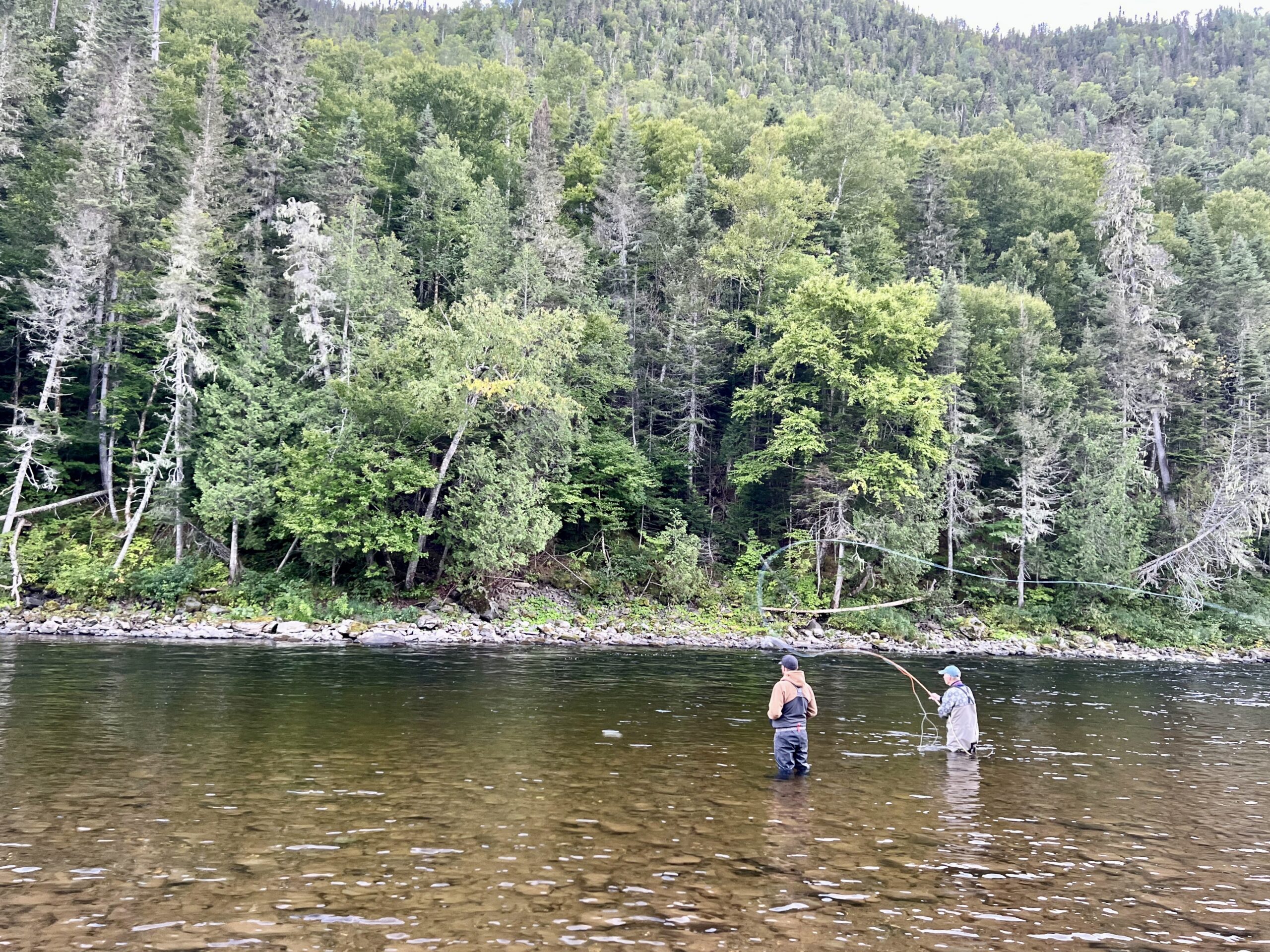
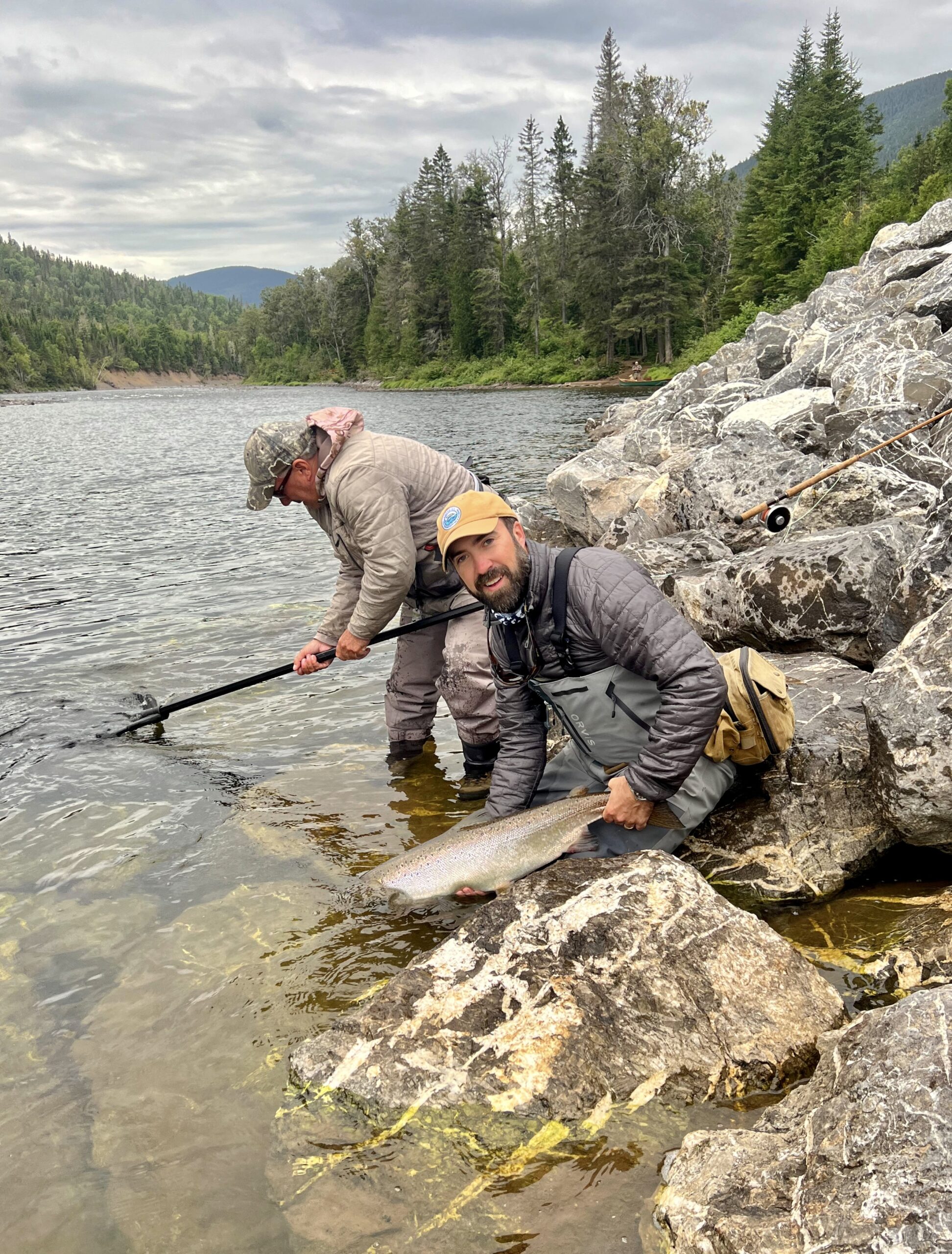
The Nova Scotia Salmon Association and the St. Mary’s River Association are working together to restore habitat in the East River St. Mary’s watershed.
NSSA’s Nick McInnis speaks about this project in detail below and within the video that follows:
One recently completed project addressed a severely eroding stream bank on the East River St. Mary’s. The main goal of this project was to stop excessive streambank erosion that was leading to the siltation of downstream habitat. Stabilization was achieved through rocking the bank and through the installation of root wad structures. Root wads enhance the effectiveness of streambank stabilization by diversifying the structure along the bank, creating additional instream cover for juvenile fish during the summer months, as well as providing cover for migrating adult Atlantic salmon during the spawning season.
To cap this project off, in the fall, the St. Mary’s River Association (SMRA) will be planting 500 native trees along the streambank to help develop a wooded riparian zone. Stay tuned and follow the NSSA on social media for opportunities to volunteer with local river groups.
This work is part of the Nova Scotia Salmon Association’s Southern Uplands W.A.T.E.R. Project, a collaborative effort funded in part by the Canada Nature Fund for Aquatic Species at Risk, and by the NSSA’s Adopt-A-Stream Program supported by the Nova Scotia Sportfish Habitat Fund. Technical support for this project was provided by the NSSA field team and by habitat consultant, Charles MacInnis of MacInnis Natural Resources.
Recent Events
On September 17th, 2022 the Sackville Rivers Association (SRA) hosted a well-attended dinner and auction event. Founded in 1988, the SRA is dedicated to the preservation, restoration and management of the Sackville River in Nova Scotia.
Pictured below (from right to left): Corey Mosher (NSSA President), Jason LeBlanc (Director of Inland Fisheries), The Honourable Steve Craig (Minister of Fisheries and Aquaculture), Ann Angelidis (SRA President), Dr. Eddie Halfyard (NSSA Chief Biologist), and Brent Locke (NSSA Executive Director).
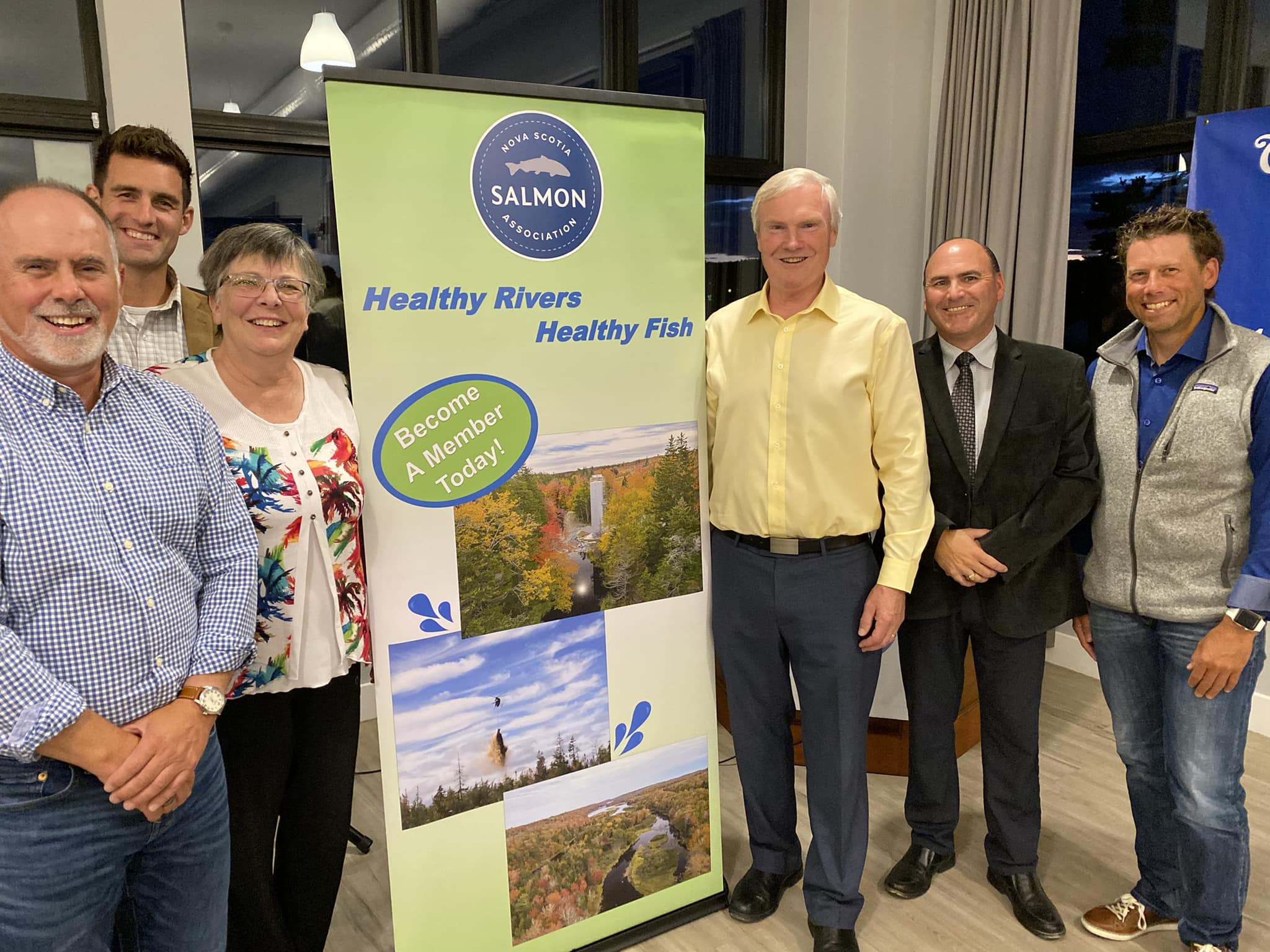
Upcoming Events
The Margaree Salmon Association (MSA) will host their AGM and Dinner Auction on Friday, October 7th at 6:00pm.
Tickets are $40.00 and the event will be held at St. Patrick’s Parish Hall.
Please call today at 902-248-2555 to reserve your seat. We look forward to seeing you there!
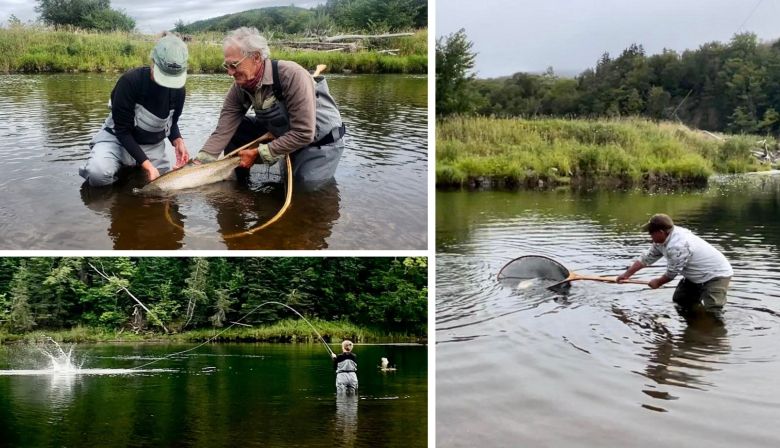
Antigonish Rivers Association (ARA) is hard at work preparing for their upcoming Wild Atlantic Salmon Biennial Dinner and Auction being held at East Coast Credit Union Social Enterprise Centre (or commonly known as the Legion or the CACL) on Saturday, October 1, 2022.
Dinner Co-Chair, Gerry Doucet shares:
The day will be peppered with a broad spectrum of activities. In the afternoon, on the lower portion of the West River (adjacent to Columbus Field), there will be the West River Anglers Tent from 1:00 to 3:00pm. Activities here will include fly casting demonstrations, fly tying, fly fishing tackle displays, raffle draw, free BBQ, and a river walk to profile some of the restoration works completed by ARA.
From 5:00 to 6:30pm we will be hosting a fly tying conclave profiling renowned tyers. This free interactive display is open to the public and will be at the CACL/Legion where the evening dinner will be held.
Our charity dinner kicks off at 6:00pm with a smoked salmon reception; opening remarks for the dinner will commence at 7:00pm with Raymond Plourde acting as Master of Ceremonies. This evening will feature silent and live auction items, raffle draws and snap sales. Special guest Auctioneer will be Dr. John Chiasson. As has been our tradition, we will have a Special Recognition Award to an individual who has gone above and beyond in caring for wild trout and salmon within our eastern rivers.
A notable highlight will be a tribute to The Legend — Mike Crosby. His sudden passing caught us all off guard and the time has come to celebrate his efforts in promoting angling and sustainable recreational fisheries in Nova Scotia and Atlantic Canada.
Tickets sales are moving fast and we are almost two thirds sold. For those that plan to attend, we encourage you to purchase your ticket(s) quickly. The easiest manner to purchase tickets is to call Dana Doucet (Dinner Administrator) over the phone at 902-631-3127. All major credit cards and accepted.
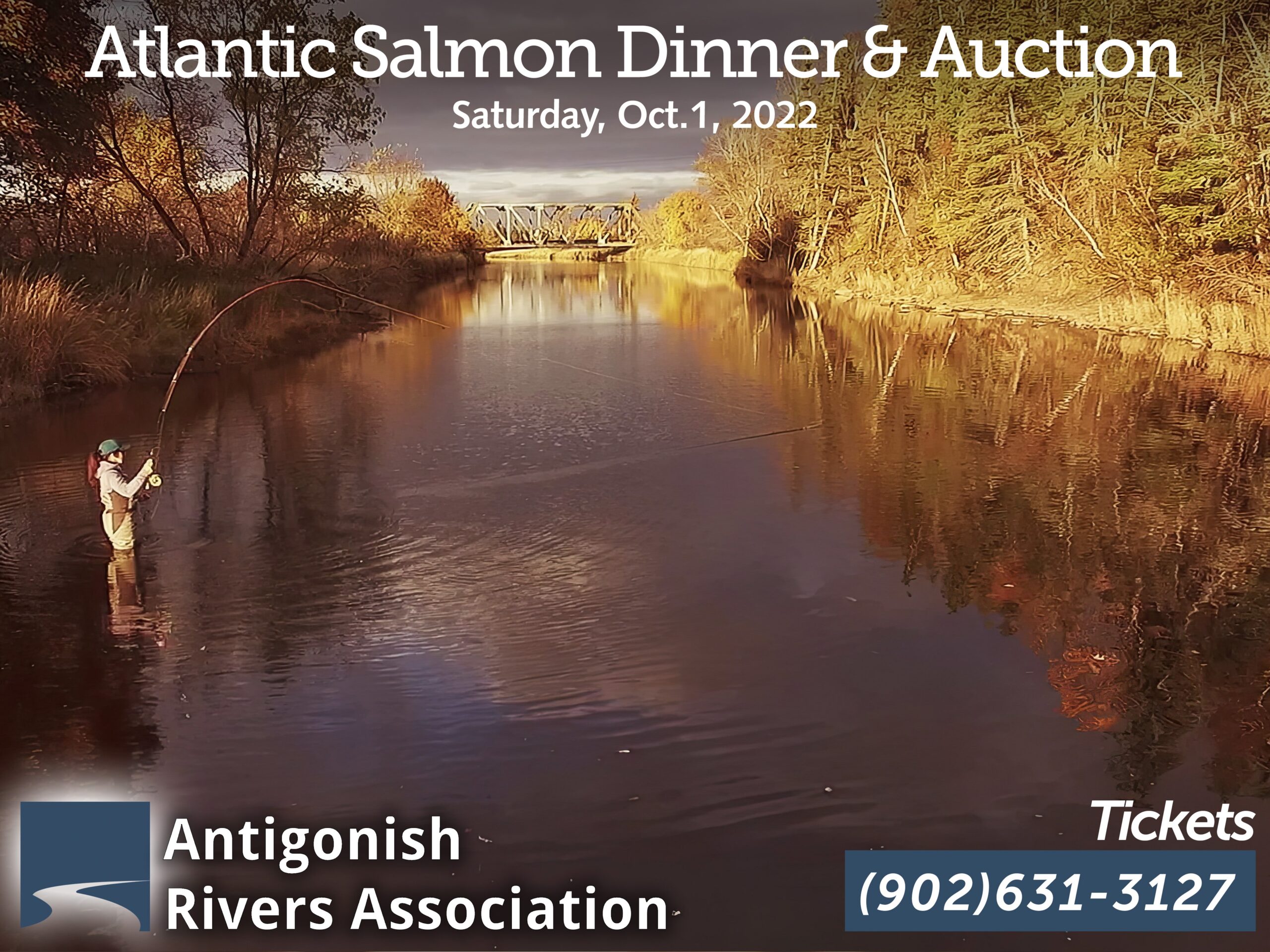
NL Director, Don Ivany writes:
Several days of rain that was forecasted for much of Newfoundland and Labrador this past week did not materialize. Water levels on most rivers throughout the province are still running low. However, the current forecast for much of the province is calling for ten straight days of rain. This combined with water temperatures that have been steadily falling, will hopefully bring much needed relief to thousands of salmon that have been experiencing low water levels and warm water temperatures for much of the latter part of this season.
Angling is currently closed on all rivers throughout the province, with the exception of the Lower Humber, Gander, and Exploits Rivers. These rivers remain open for catch and release angling only, until October 7th. During the past week, reports indicate that there are still fishing moving through all three of these rivers, including some bright fish. However, there are not as many anglers fishing this time of year, due to other fall activities such as hunting. As a result, we are receiving fewer reports from anglers, but the few shared indicate that fish are still being released on all three of these rivers.
A Positive News Story
Federal Fisheries Minister, Joyce Murray, announced this month that DFO will extending the contracts of 40 Fishery Guardians on our rivers in NL for another four weeks. See DFO announcement below:
September 7th, 2022 – EXTENSION OF THE RIVER GUARDIANS PROGRAM FOR THE 2022 SEASON
« The contracting for fishery guardian services is an integral component of the delivery of DFO’s Newfoundland and Labrador Fishery Guardian Program and continues to be a key compliance strategy for the protection of inland fish stocks, in particular Atlantic salmon.
I am pleased to share today that a 4-week extension has been made to the Fishery Guardians contract to ensure continuity of services through to the end of the 2022 season.
I want to thank the guardians for all their hard work, and their dedication to protecting our waterways, fish and their habitats all while keeping anglers safe. » – The Honorable Joyce Murray
For reactions to this announcement, see CBC News Article.
As of the date of this report DFO has not released the fishway counts for the past week. The latest counts available are for Sept 11, 2022 here.
Hurricane Earl Packs A Punch
Don Ivany updated us on September 15th:
Hurricane Earl recently hit Eastern Newfoundland with a wallop, registering as a category 1 storm that caused extensive flooding and damage to infrastructure throughout the Avalon Peninsula region. The storm dumped upwards of 200 mls of rain in a very short period of time, and was accompanied by sustained winds of 120 km per hour with gusts up to 180 km per hour. The exact extent of erosion to our salmon rivers in this region of the province will likely not be known for some time, but with this level of flooding, and spawning season just a few weeks away, it is expected that the damage will be extensive. See Saltwire article here.
Fall Fishery on the Island of Newfoundland
As noted above, only three rivers in the province of NL currently remain open for fall angling. These are the lower Humber, Gander, and Exploits Rivers, which will remain open until October 07, 2022.
Lower Humber River – The water temperature on the lower Humber this past week dropped to 15.0 degrees Celsius, and combined with the fact this section of river is rather channelized, angling conditions were ideal this past week. However, while angler Donald Golden Feather reports there is still fish moving in this section of river, this past week the fishing was rather slow.
Lower Gander River – The water temperature on the lower Gander River also dropped to 15.0 degrees Celsius. However, the water level remains deadly low at just 15.0 cubic meters per second (c/m/s). Angler, Craig Canning, reports there were a lot of fish at First Pond Bar last week, including a few fresh fish. He reports that he hooked several fish and also had several rises one day. Veteran angler, Dave Vardy, reports there were few fish in the river near Glennwood, and he did not see any anglers fishing at that location last week, possibly indicating fishing was slow in this location.
Lower Exploits River – According to Kim Thompson, Executive Director of Environment Resources Management Association (ERMA), « water levels and water temperatures on the Exploits River were good last week ». Kim indicates that their organization is still operating the fishway on the lower section of the river and there are fish passing through the fishway. She also indicates that there were still a few anglers fishing the river each day last week and some were experiencing some success.
Labrador – The recreational salmon fishery officially closed on September 15th. Overall, there has been a good sign of fish in Labrador rivers this year and anglers have enjoyed much success.
